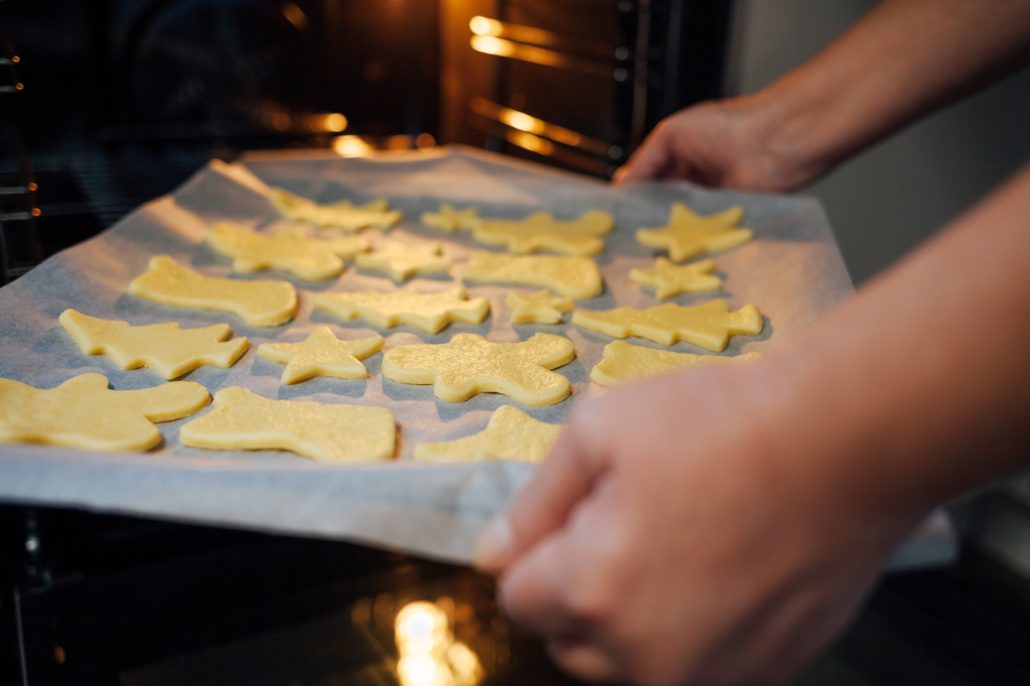
We’ve decked the halls at Seacole and we’re all settling in for some festive time off at the end of month. And if your office is like ours, the Christmas cookies are . . . everywhere!
And that got us thinking: what’s the chemistry behind a good cookie?
Cookie Chemistry at Work
Baking cookies (and treats of all kinds, actually) is an example of chemistry in action. Baking is one of the first chemistry experiments we do as kids. The ingredients you use, the amount you beat the dough, the temperature of the oven, and baking time work together to set off chemical reactions, resulting in the perfect cookie.
Cookie Chemistry Basics: Spread, Rise, Color, and Flavor
The spread, or diameter, of your cookie is determined by the butter. If you use melted butter in your dough, it’s very wet when the cookies go in the oven. Their structure quickly breaks down in the heat, expanding the cookie’s diameter. Using colder butter helps maintain the structure.
Your cookie’s rise occurs when the water in your dough is converted from liquid to gas (i.e. steam). The steam pushes the dough up as it starts to rise. Then, the baking soda and baking powder combination cause a chemical reaction, producing carbon dioxide. This makes the cookie rise even further and creates holes in the dough, resulting in a light and flaky cookie. Also, did you know a cookie won’t rise in temperatures lower than 212 degrees Fahrenheit? That’s the boiling point of water. Any lower and the water in the dough won’t convert to steam.
Just when you thought the chemical reactions were done, the last few minutes of the bake cause two delicious chemical reactions. As the sugars break down, they caramelize and create that signature “fresh-baked cookie” odor. Then the proteins in the egg and flour finally succumb to the Maillard reaction. This reaction occurs when sugars and proteins are heated together, for delicious results. It’s responsible for the toasty flavor of your favorite cookie.
Cookie Chemistry: Advanced Skills
Now that you’ve mastered the basics, here are a few chemistry tips for perfecting your favorite cookie. We’ve already mentioned that using melted butter in your dough will create a flatter, chewier cookie. Using cold butter creates a cakey, fluffy cookie.
Baking soda (aka sodium bicarbonate) and baking powder (baking soda plus a dry acid, such as cream of tartar) can alter your cookie chemistry, too. Switching out soda for powder will create extra rise because baking powder leavens the dough when it’s mixed in and when it’s heated.
Another pro tip? Use more flour for a thicker cookie. And, dark sugars such as molasses and honey will get you a toastier flavor than white sugar.
Seacole’s Favorite Cookie Recipe: Aunt Mary’s Sugar Cookies
Here’s a sugar cookie recipe straight from the kitchen of Seacole owner and founder Gregg Elliott.
Aunt Mary’s Sugar Cookies
1 cup butter
2 eggs
1 ½ cup white sugar
1 tsp. salt
½ tsp. baking soda
1 tsp. fresh baking powder
1 tsp. vanilla
3 cups flour (reserve 3 Tbsp. for rolling)
Sift flour, salt, baking soda, and baking powder together three times. Cut into butter like a pie crust. In a separate bowl, beat eggs until light. Add sugar and vanilla to eggs and beat until light and fluffy. Combine all ingredients and hand mix gently. Store in the refrigerator overnight.
Roll thin or make into balls and press with the bottom of a glass that has been dipped in sugar. Bake at 300–325 degrees for 10–12 minutes. Enjoy!
Happy Holidays from the Seacole team!


